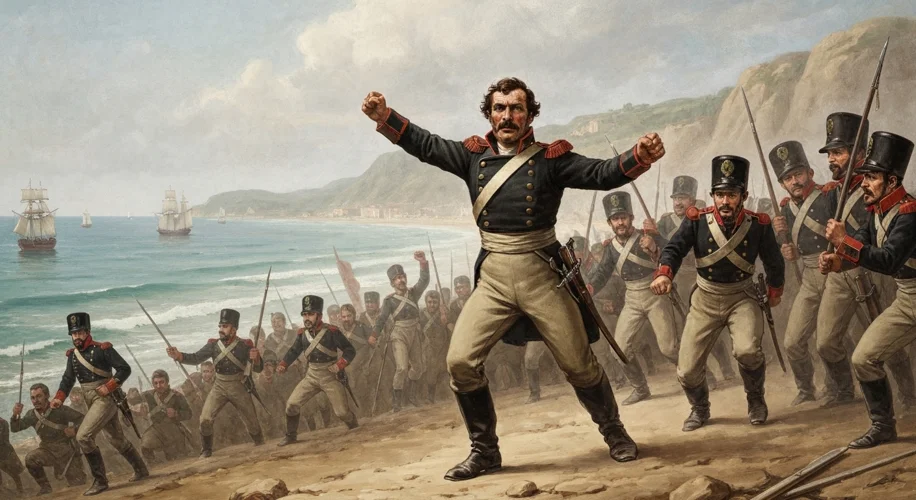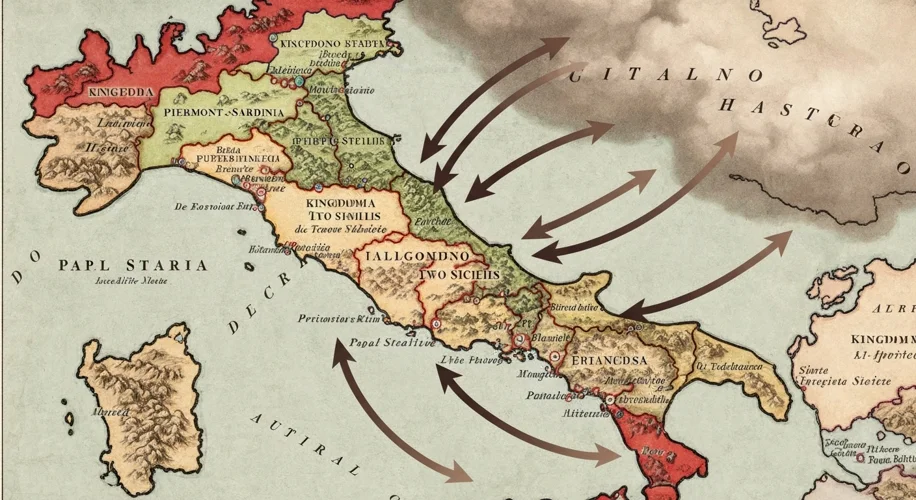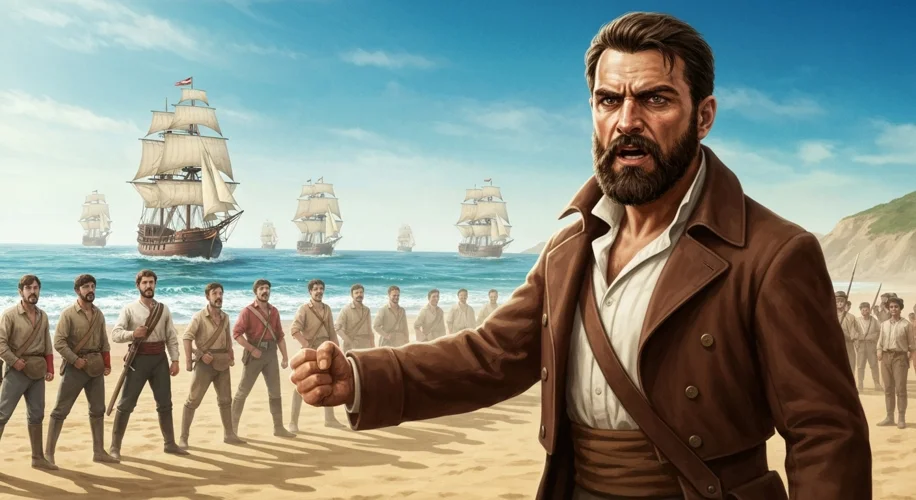Imagine a land of ancient ruins, sun-drenched vineyards, and vibrant cities, yet fragmented into a patchwork of kingdoms, duchies, and papal states, each with its own ruler, laws, and currency. This was Italy for centuries, a beautiful but politically fractured peninsula ripe for a seismic shift. The 19th century would witness a fervent dream ignite: the unification of Italy, a movement known as the Risorgimento, or “Resurgence.” It was a complex tapestry woven with brilliant minds, daring soldiers, revolutionary fervor, and the clatter of cannons, ultimately forging a modern nation-state.
For ages, Italy existed more as a cultural and geographical concept than a unified political entity. The memory of the mighty Roman Empire lingered, a golden age of unity and power, but subsequent centuries saw the peninsula carved up by foreign powers – the Bourbons in the south, the Habsburgs in the north, and the Papal States in the center. Local identities remained strong, and the very idea of a single “Italian” nation was a radical notion, often confined to intellectual salons and revolutionary pamphlets.
However, the embers of nationalism began to glow in the early 19th century, fanned by the winds of change sweeping across Europe. The French Revolution and the Napoleonic Wars, paradoxically, planted seeds of Italian unity by briefly consolidating many regions and exposing Italians to concepts of liberty and self-determination. Yet, after Napoleon’s fall, the old order was restored, and Austrian influence tightened its grip, stifling nascent nationalist movements.
Into this simmering cauldron stepped a cast of unforgettable characters, each playing a crucial role in the drama of unification. There was Giuseppe Mazzini, the fiery ideologue, whose Young Italy movement preached a democratic republic and inspired countless young Italians with his passionate calls for freedom. He was the “soul” of the Risorgimento, articulating the romantic vision of a united Italy. Then came Count Camillo di Cavour, the shrewd Prime Minister of Piedmont-Sardinia. A master of realpolitik, Cavour was the “brain,” skillfully navigating international diplomacy and building alliances to outmaneuver Austria and expand his kingdom’s influence. He understood that unification would require not just popular will but also strategic military and political power.
And of course, there was Giuseppe Garibaldi, the charismatic military leader and ardent republican. With his famous “Redshirts,” Garibaldi became the “sword” of the Risorgimento, leading daring military campaigns that captured the popular imagination and liberated vast swathes of southern Italy. His legendary landing in Sicily in 1860, with just a thousand volunteers, and his subsequent rapid conquest of the Kingdom of the Two Sicilies, is a tale of audacious bravery and popular support.

The path to unification was far from smooth. It was a series of calculated risks, diplomatic maneuvers, and bloody conflicts. Cavour, recognizing Piedmont-Sardinia’s relative weakness against Austria, masterfully used the Crimean War to gain a seat at the international table and bring the Italian question to the forefront. He then struck a secret deal with Napoleon III of France, provoking Austria into declaring war in 1859. The Second Italian War of Independence saw decisive victories for the Franco-Piedmontese forces, notably at Magenta and Solferino, pushing Austrian influence out of Lombardy.
The popular uprisings that followed, coupled with Garibaldi’s lightning campaigns, rapidly changed the political landscape. By 1861, a plebiscite declared the Kingdom of Italy, with Victor Emmanuel II of Piedmont-Sardinia as its first king. However, the process was incomplete. Venice remained under Austrian rule until 1866, after Italy allied with Prussia in the Austro-Prussian War. Rome, still under papal authority and protected by French troops, was finally annexed in 1870 after the outbreak of the Franco-Prussian War, completing the unification.

The consequences of the Risorgimento were profound. A new, unified Italy emerged, but it was a nation grappling with regional disparities, economic challenges, and political divisions. The north, more industrialized, often felt it was subsidizing the poorer south. The relationship between the new state and the Catholic Church remained fraught for decades.
Yet, the Risorgimento remains a powerful testament to the enduring human desire for self-determination and national identity. It was a complex period, characterized by idealism and pragmatism, popular movements and elite maneuvering. The “Resurgence” wasn’t just about drawing borders on a map; it was about forging a shared sense of belonging, a common destiny for a people who had long dreamed of being one nation. The echoes of those struggles, the courage of Garibaldi, the cunning of Cavour, and the vision of Mazzini, still resonate, reminding us that the birth of nations is often a turbulent, yet ultimately transformative, journey.

